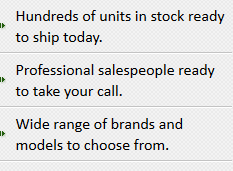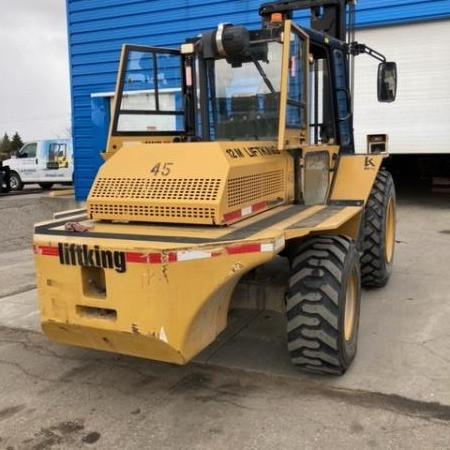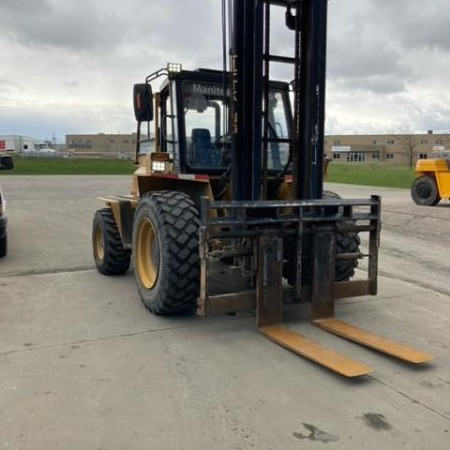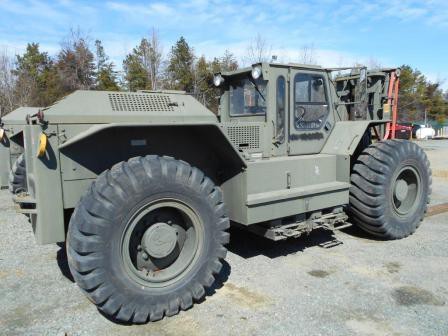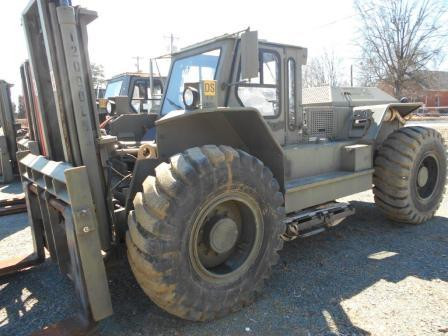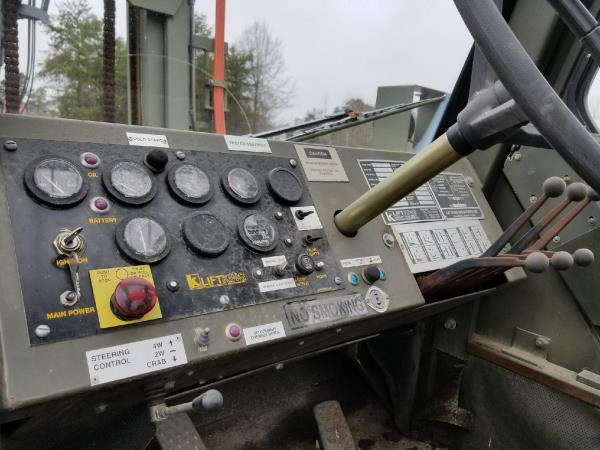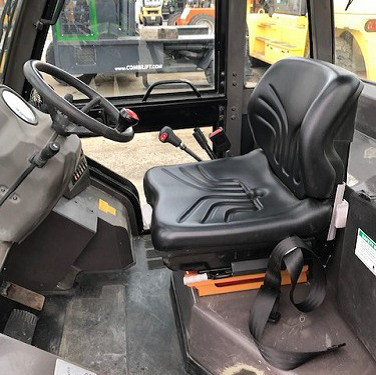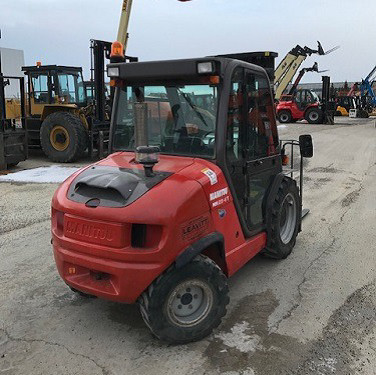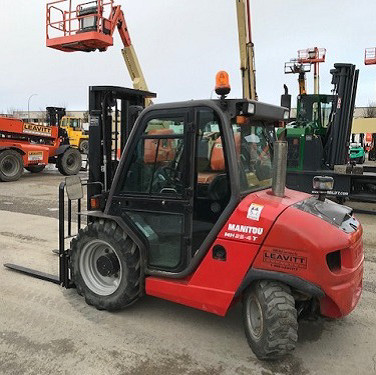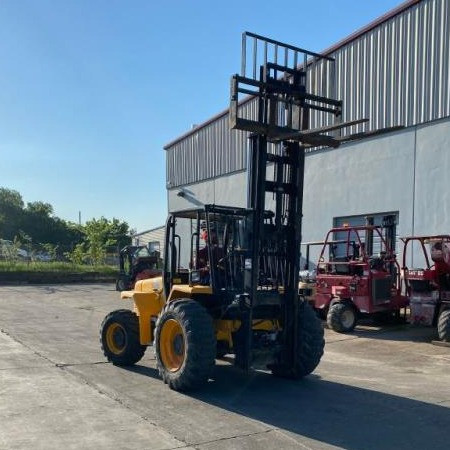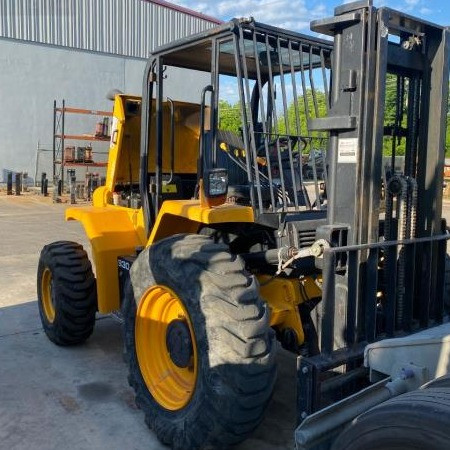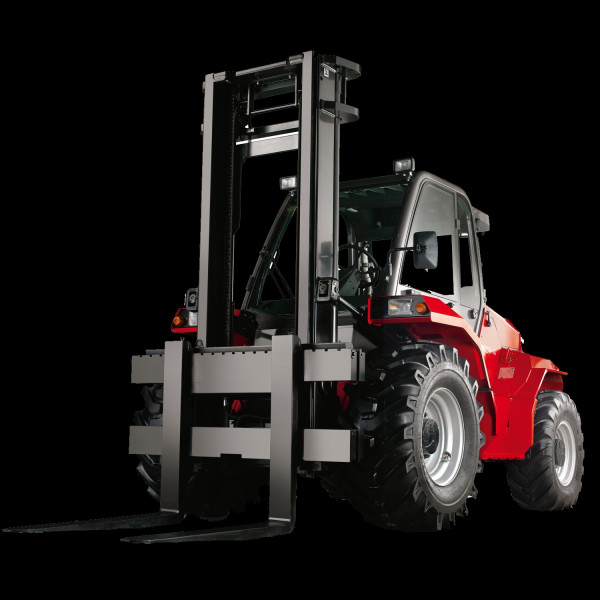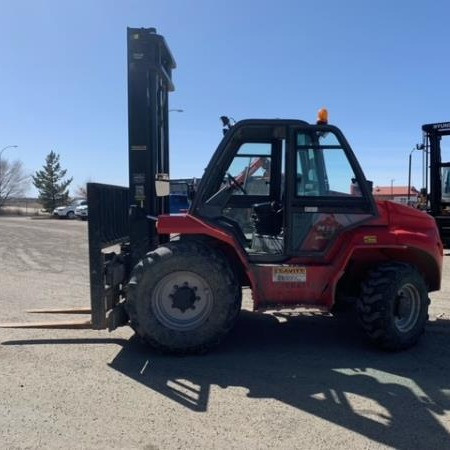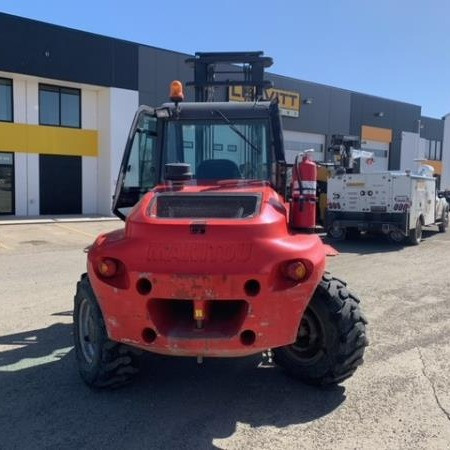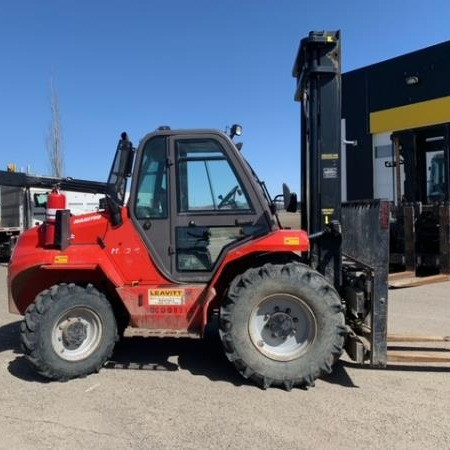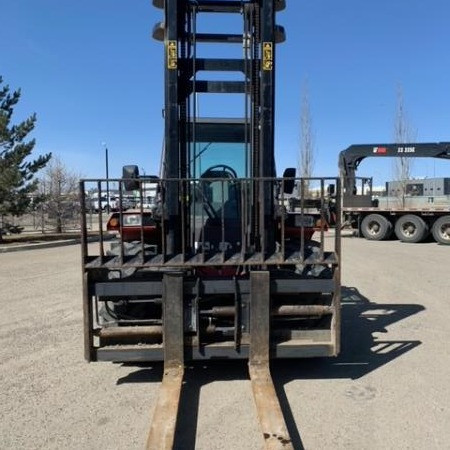Rough Terrain Forklift Glendale
Used Rough Terrain Forklift Glendale - Forklift trucks utilize two forks to transport pallets and load and unload cargo. Forklifts fall into two main categories, industrial forklifts and rough terrain forklifts.
The first category of forklifts, industrial forklifts, are mostly used in warehouses and at loading docks on surfaces that are relatively smooth and level. By contrast, the second category of forklifts, rough terrain forklifts, are commonly used to run on uneven and rocky surfaces. Commonly found at exterior construction sites, rough terrain forklifts have the tires, size and weight capacity to handle heavy loads. The tire type is one of the key differences between rough terrain and industrial forklift units. Common road tires, cushion tires are the main kind found on industrial forklifts. Pneumatic tires are utilized by rough terrain models. They are similar to tractor tires that offer more traction and flotation. Industrial forklifts can be powered by internal combustion engines but are more frequently powered by an electrical source, such as battery or fuel cell whereas rough terrain forklifts are almost always powered by an internal combustion engine.
Types of Class 7 Rough Terrain Forklift Trucks
The three types of Class 7 Rough Terrain Forklift Trucks include the rotating telehandler forklifts, telehandler forklifts and straight mast forklifts.
Every rough terrain forklift truck is designed to operate on disturbed ground and difficult locations commonly found in military and construction atmospheres. A rough terrain forklift also offers increased maneuverability and performance. Safety considerations are taken into account for rough terrain locations with raising loads in difficult environments to keep the operator safe from tipping over. The machine needs to remain in a stable position prior to lowering, lifting or moving any items. Rough terrain forklift operators must practice correct lifting techniques to remain stable on the ground.
Straight Mast Forklifts
Designed to facilitate safe transport along difficult terrain such as demolition sites and construction locations, straight mast forklifts can complete the job safely and efficiently. Pneumatic cushion tires allow this forklift better maneuverability and accessibility around difficult terrain. Pneumatic tires allow the machine to successfully traverse difficult terrain. The majority of straight mast forklifts come in both two wheel and four wheel drive capabilities. Even though these machines are better utilized in exterior locations, many straight mast forklifts operate with propane or diesel, enabling them to be used indoors for short timeframes. Straight mast forklifts have a similar lift capacity compared to standard forklift models; ranging from 5K to 36K lbs.
Telehandler or Telescopic Handler Forklifts
The distinct telescoping boom on telehandlers and telescopic handler forklifts contribute to the unit’s name. This specially designed boom allows the forklift truck to pick up loads and place them at differing heights in front of the unit. The operator can achieve enhanced flexibility with better reach during load placement.
Featuring two wheels found at the front and two wheels at the rear, the standard telehandler is a long and low machine. Mounted at the back of the forklift, the telescopic boom is on a pivot that is located many feet above the forklift frame. The left side of the machine houses the cab and the hydraulic fluid tank and the fuel tank are found opposite to the cab. The forklift engine and transmission are situated along the center of the machine. This common configuration allows for a balanced forklift which is necessary for the basic stability of the machine which lifting, transporting and lowering loads.
Telehandler units offer significantly higher lifting heights compared to standard units. Also called compact telehandlers or high-reach telehandlers, these forklift trucks can lift their full load capacities from 18 feet, for the compact telehandlers, to 56 feet, for the high-reach telehandlers, into the air. Load capacities are between 5K to 12K pounds.
All-terrain forklifts rely on all-wheel steering to deliver better maneuverability and stability. This, along with power shift transmission and other steering features, means that the operator can move the lift in as close proximity to the work area as possible.
The latest telehandler models feature ergonomic upgrades for ultimate operator comfort. These features include tilted steering options and roomier cabs to increase operator comfort. High in demand at job sites, these ergonomic options reduce operator fatigue and repetitive stress injuries.
A single joystick is a common design for most telehandlers. The joystick controls all the forklift’s boom functions as well as the hydraulic system which allows for straightforward and efficient operation.
Non-marking tires are a feature that telehandler forklifts can benefit from by allowing these units to be utilized for maintenance on billboards and signs and on stadiums and buildings.
Rotating Telehandler or Roto Telescopic Handler Forklifts
Rotating telehandler or roto telescopic handler forklifts have many features in common with the standard telehandler forklift. The rotating telehandler can lift excessive loads to extreme heights safely and efficiently. This unit’s added turntable and rotation flexibility increases the types of jobs it can complete. Not having to reposition the forklift saves time and money. The rotating models have access to 360 degrees, creating a much greater workspace with immediate access.
Commonly, rotating telehandlers have another joystick to handle the rotation portion separately from the lift function. As with the standard telehandler forklift, rotating telehandlers are available with added features including power assist steering, four-wheel drive and minimized slip differential on the rear axle to boost traction and for additional safety.
Of course, a machine that can rotate has extra safety considerations to understand. Because of this, rotating telehandler rough terrain forklifts come with stabilizers to increase the safety when rotating loads from one side of the forklift to the other. There are some rotating telehandlers that are designed to move heavy weights without stabilizers to reduce the time it takes to reposition the forklift for work in other areas of the jobsite.
Rotator telehandlers are usually smaller than their fixed cab counterparts, the standard telehandler. Because of this, their load capacities are also smaller than the standard telehandler. Ranging between four thousand and ten thousand pounds, rotating telehandlers can reach lift heights from 15 to 80 feet.
Winch attachments can transform rotator telehandlers and standard models into a crane. This means that these forklifts can sometimes allow a project to forego the need for a crane at the jobsite, saving time, expense and workspace.
Advancements for Rough Terrain Forklifts
Many attachments are currently available for rough terrain forklifts, such as booms, winches, rotating fork carriages and articulating booms. More rough terrain forklift attachments will be unleashed onto the market in future years thanks to their ability to make the forklift more multi-purpose than ever before.
However, the bulk of advancements are expected to be in the form of safety features, built-in to manufactured rough terrain forklifts. Automatic load restriction units and certain safety features have started being implemented. By automatically weighing a load, these systems calculate the loads’ safe reach distance while taking the boom angle and its’ extension into account. If the safe reach distance is reached, an alarm will sound, warning the operator to make the proper adjustments to either the boom angle, the reach distance or load weight.
Rough Terrain Forklift PDF
Stock Number: 209058 GL
Make: LIFTKING
Model: LK12M42
Year: 2015
| Stock Number |
209058 GL |
| Make |
LIFTKING |
| Model |
LK12M42 |
| Year |
2015 |
| Category |
Rough Terrain Forklift |
Stock Number: 267846 GL
Make: Liftking
Model: LK12000
Year: 2003
| Stock Number |
267846 GL |
| Make |
Liftking |
| Model |
LK12000 |
| Year |
2003 |
| Category |
Rough Terrain Forklift |
Stock Number: DP-MAN008 GL
Make: MANITOU
Model: MH25-4T
Year: 2016
| Stock Number |
DP-MAN008 GL |
| Make |
MANITOU |
| Model |
MH25-4T |
| Year |
2016 |
| Category |
Rough Terrain Forklift |
Stock Number: 208325 GL
Make: MANITOU
Model: M50.4
Year: 2015
| Stock Number |
208325 GL |
| Make |
MANITOU |
| Model |
M50.4 |
| Year |
2015 |
| Category |
Rough Terrain Forklift |
Stock Number: LS15257 GL
Make: JCB
Model: 930
Year: 2013
| Stock Number |
LS15257 GL |
| Make |
JCB |
| Model |
930 |
| Year |
2013 |
| Category |
Rough Terrain Forklift |
Stock Number: EQC008213 GL
Make: MANITOU
Model: M50
Year: 2017
| Stock Number |
EQC008213 GL |
| Make |
MANITOU |
| Model |
M50 |
| Year |
2017 |
| Category |
Rough Terrain Forklift |
